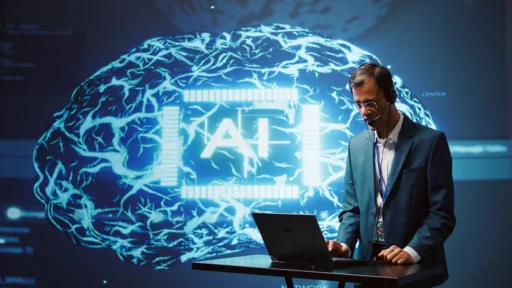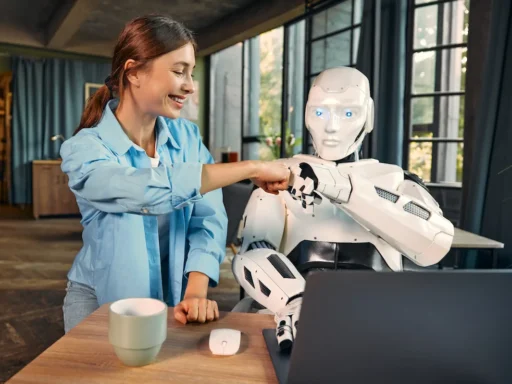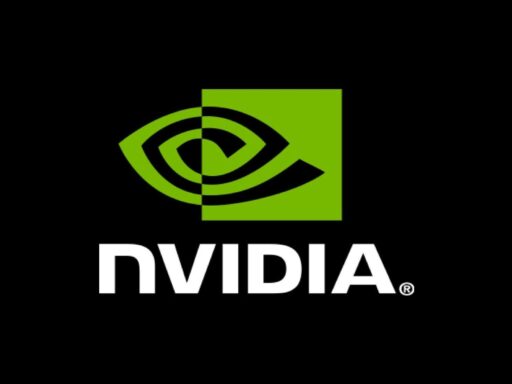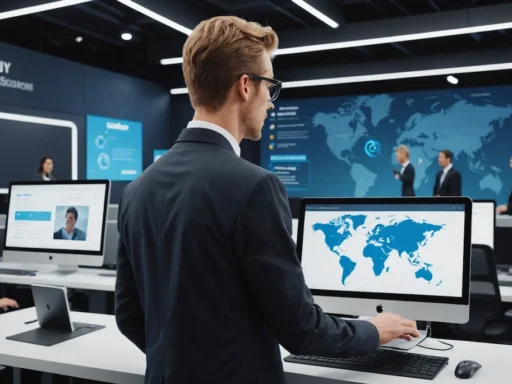When someone like Ilya Sutskever steps away from an AI giant like OpenAI, it’s not just a LinkedIn update. It sends shockwaves through industries, spooks AI researchers, triggers investor calls, and flips ongoing tech strategies on their head. This wasn’t just any resignation—it came from a co-founder, Chief Scientist, and one of the key brains behind the neural networks that power ChatGPT.
What’s even more interesting? The exit comes on the heels of boardroom chaos, strategic pivots, and a company caught between its mission of building safe AI and the gravitational pull of profit.
If you’re asking, “Why should I care?”—here’s why: this moment isn’t just about OpenAI’s internal drama. It opens doors to deeper insights on how we govern AI, who actually steers alignment work, and why respected insiders are jumping ship. It shapes not just tech’s future, but how society interacts with intelligent systems at scale.
Let’s unpack how OpenAI’s leadership collapsed into a game of swaps, tension, and radical pivots—and where it might go next.
Tracing Openai’s Leadership Evolution
OpenAI launched with a clear north star: build artificial general intelligence (AGI) that benefits all of humanity. The founding roster read like a who’s-who of AI power players—Elon Musk, Sam Altman, Greg Brockman, Wojciech Zaremba, and Ilya Sutskever. Sutskever wasn’t just another PhD in the room. He carried academic clout and played a critical role in shaping the early deep learning era, coming from Google Brain with a history tapped into neural architectures.
The crew started lean and mission-focused—no ads, no IPO dreams, no billionaire-engineer messiah complexes… yet. But somewhere between building GPT-2 and rolling out ChatGPT, the garage lab energy turned into corporate infrastructure. Rapid product releases. Ballooning valuations. Partnerships with Microsoft worth billions. It wasn’t just about the tech anymore—it became about controlling the stack.
By 2023, the gap between ideals and operations started to show. In November, a shocking boardroom power struggle unfolded. It wasn’t leaked—it exploded. Sam Altman was pushed out by the board citing “a lack of consistent candor.” Ilya was part of that decision. But here’s where it got murky: internal Slack logs and early employee leaks showed that the move backfired fast. Hundreds of employees revolted. Microsoft threw its weight behind Altman. Within days, he was reinstated. And Sutskever? Left issuing public regrets.
From there, OpenAI’s model shifted. The decentralized “flat” structure that once let researchers speak with autonomy was gone. The company brought in a more traditional leadership spine. A slice of Silicon Valley dressed in ethical AI robes, but operating under aggressive ship-or-die timelines.
Key Leadership Changes: Shifting The Balance Of Openai
Ilya Sutskever officially threw in the towel in May 2024. On paper, he left to pursue AI safety research—something “personal and meaningful.” The same documents detailing his exit confirmed what insiders knew: his role as Chief Scientist wasn’t symbolic. He shaped models. Steered alignment. Co-led the Superalignment team. Losing him wasn’t just a talent drop; it broke a vocal line toward responsible development.
Then came Mira Murati’s move. The former CTO and interim CEO walked away four months after Ilya. Murati helped steer the launch of GPT-4 and was one of the most public evangelists for OpenAI’s tech. Her resignation left a vacuum in both technical vision and media trust—especially as multiple execs followed her out the door, signaling more than just personal decisions. This was a values-based reset in motion.
By August 2024, John Schulman, another founding engineer and policy influencer, announced he’d be joining Anthropic. His reason? Refocus on alignment and get closer to the frontier questions. Translation: he wanted out of the OpenAI machine and into a frame where safety came before scale.
- Ilya Sutskever: Resigned to focus on AI safety initiatives outside OpenAI
- Mira Murati: Left to explore independent opportunities after internal transitions
- John Schulman: Exited to join Anthropic and double down on alignment research
These aren’t team swaps. They signal a core shift—some of the very people who built the system now stepping away to criticize or correct it from the outside.
| Leader | Departure Date | Next Focus |
|---|---|---|
| Ilya Sutskever | May 2024 | Independent AI safety initiative |
| Mira Murati | September 2024 | Independent exploration |
| John Schulman | August 2024 | AI alignment at Anthropic |
The bottom line: the departure of Sutskever wasn’t isolated. It’s part of a pattern where OpenAI’s original thinkers are either losing influence within the org—or walking away entirely to chase the version of AI they originally signed up to build.
Internal Shifts and OpenAI’s Strategic Direction
When Ilya Sutskever resigned in May 2024, it wasn’t just the chief scientist stepping down—it was one of OpenAI’s last ethical compasses signaling an alarm. The company’s structure had already been stretched thin between nonprofit ideals and billion-dollar partnerships, but his exit made the tension unavoidable.
Shifting Organizational Models
OpenAI started as a nonprofit with a mission to align artificial general intelligence (AGI) with human values. Today it’s operating under a capped-for-profit model, but the “cap” appears more symbolic than practical. Its transition wasn’t just philosophical—it was structural. In 2019, OpenAI LP was formed, allowing the company to issue equity and attract heavyweight tech investors. The goal? To fuel AGI while somehow keeping corporate greed in check.
That promise is now showing cracks. After a 700% revenue jump in 2023 and partnerships worth hundreds of billions—including the mammoth $500B Stargate Initiative with SoftBank and Oracle—critics argue that OpenAI’s moral compass is spinning. The original alignment vision is being nudged aside by product rollouts like GPT-4o and aggressive feature releases like public ChatGPT search. These aren’t inherently wrong. But they’ve shifted the balance from cautious science to speed-driven scale.
Team Reshuffles
Leadership turnover at OpenAI feels less like evolution and more like a redirection. As Sutskever, John Schulman, and Mira Murati walked out, a new guard walked in. Mark Chen took over as Chief Research Officer, becoming the bridge between moonshot research and monetizable products. Brad Lightcap moved into the COO seat, formalizing his role managing huge partnership portfolios. And Julia Villagra became Chief People Officer, tasked with preserving culture while scaling global operations.
- Mark Chen: Tasked with productizing research without losing its depth.
- Brad Lightcap: Spearheading operational efficiency and global reach.
- Julia Villagra: Navigating workforce growth across volatile AI talent wars.
These aren’t just internal job switches. They signal a downstream effect: fewer former researchers calling the shots, more product and ops veterans setting the tempo. That shift intensifies the company’s aggressive push into consumer-grade, revenue-generating AI, raising flags among ethics watchdogs.
AI Governance as a Pillar of Transition
OpenAI champions AI ethics in its marketing materials, but governance in practice is shaky. Its board restructuring fiasco last November exposed fault lines—not just among executives, but in how accountability is distributed. After attempting to oust CEO Sam Altman, Sutskever later apologized publicly. Then he left to found a new AI safety venture. That decision speaks louder than any press release.
His pivot to alignment work outside OpenAI underlines a louder truth: when insiders lose faith in governance structures, they don’t reform them—they walk. This leaves OpenAI’s touted “safety switch” more like a guardrail that’s already been breached. The departure of its Superalignment team hints that ethical objections were not just ignored—they were overruled.
So while OpenAI projects a commitment to ethical AGI, real-world signals point to a governance model that’s more reactive than relational. Until there’s enforceable oversight—not just well-written principles—the company remains vulnerable to its own scaling ambitions.
The Broader Research Transition Within OpenAI
Research Priorities in Flux
Since Sutskever walked, OpenAI’s research agenda hasn’t collapsed—but it’s definitely realigned. The shift is subtle but decisive: from frontier AI experiments to product-ready, monetizable features. GPT-4o reflects this U-turn. So does the rollout of ChatGPT’s search function in early 2025, directly challenging Google head-on.
The research team’s energy is no longer channeled into long-horizon philosophical riddles. Instead, it’s pointed toward deployment—speed, integration, consumer adaptation. Internally, some researchers argue that it’s still possible to align safety with scale. But others wonder if foundational science is being sidelined in favor of quarterly revenue goals.
Balancing Research and Product Development
Mark Chen’s appointment promised to reconnect research with the product pipeline in a more symbiotic way. According to internal communications leaked in January, his roadmap emphasizes smoother handoffs between labs and engineering, with safety baked into the earliest design phases. Sounds good on paper.
But in practice, it’s hard to monitor or externalize what “baked-in ethics” really means without third-party audits. Researchers close to the GPT-4o launch have quietly described an environment where deadlines started to override risk evaluations. There’s still talk about alignment, sure—but it increasingly feels like background noise to the product drumbeat.
Dissolution of the Founding Cohesion
The early OpenAI dream team—Altman, Sutskever, Murati, Schulman—shared a distinct if idealistic vision. Their departures over nine months now read like a dismantled arc. This isn’t a simple matter of talent cycle or job fatigue. It reflects deeper ethical and strategic divergence.
Some insiders say the break began during the failed CEO ouster in 2023. Others point earlier—to SoftBank negotiations and partnership expansion pressures. Either way, what once was a collective mission seems now scattered across multiple exits and reappointments. Altman remains at the helm, but the fellowship that shaped OpenAI’s narrative is over.
Ethical Challenges and the AI Mission
AI Ethics Under Scrutiny
The common pitch is that OpenAI leads with responsibility. But its product roadmap paints a more chaotic canvas. Every new launch—first GPT-4, then 4o, followed by ChatGPT’s “search mode”—was met with communities calling for deeper safety tests, transparency, or more guardrails. They weren’t ignored outright—but they weren’t baked in either.
The speed-versus-safety dynamic is no longer theoretical. It’s daily trade-offs baked into every feature demo. Internally, some ethics team members have reportedly left or been reassigned after raising tempo concerns, according to leaked Slack messages documented by Digital Rights Lab investigators in March.
The Departure of the Superalignment Team
Sutskever wasn’t alone when he left. Other core team members from OpenAI’s Superalignment division followed, citing frustration with limited authority and execution timelines that clashed with long-term study goals. Their exits weren’t quiet; they launched a new nonprofit focused exclusively on safety-first research.
That migration tells us OpenAI still values alignment—but only up to the point it doesn’t slow down deployment. When foundational caution becomes an operational bottleneck, it’s marginalized. As a result, the exodus of safety experts has become its own referendum on OpenAI’s ethical trajectory.
Corporate Pressure vs. Founder’s Vision
Behind the polished launches and sleek product showcases lies a deeper shift. What began as a philanthropic moonshot now functions as a hyper-competitive AI startup with billion-dollar expectations. Elon Musk’s legal challenges around the nonprofit-to-profit pivot aren’t just legalistic—they hint at public trust damage.
OpenAI’s foundational promise—AI for the benefit of humanity—is harder to reconcile with opaque governance, commercial speed, and leadership churn. Unless new checks emerge that grant alignment teams real power over product priorities, the philanthropic mission risks dilution beyond recognition.
OpenAI’s New Leadership Ecosystem
If you’re watching OpenAI from the outside, you’re probably asking: after Ilya Sutskever resigns, who’s really steering this ship? The brain behind half of GPT just walked out. That’s not just turnover; that’s a seismic culture-level shakeup.
The new faces up top? They don’t just bring fresh résumés. They bring a different kind of fire.
A New Wave of Leadership
Julia Villagra steps in as Chief People Officer—her job? Build a war machine of talent and culture out of a company bleeding top minds to competitors like Anthropic. She’s not your standard HR exec. People close to Villagra say she’s already scrapping the “perks-and-ping-pong” approach for something leaner, more aligned with long-term scaling across continents.
Brad Lightcap’s not new, but his role as COO gained serious weight post-reorganization. This guy’s the infrastructure behind the flash. He’s linking partnerships, tying up global operations, and keeping the glowing AGI star tethered to Earth. No more experimental moonshots without an ops map.
Then there’s Mark Chen, now Chief Research Officer. He’s playing fuse—lighting up R&D and lighting the way to commercial deployment. Chen’s mandate? Don’t research for vanity. Build stuff. Ship it. Make it usable. Otherwise, why even build?
Strategic Focus Shifts
This isn’t the old OpenAI of quirky R&D jams and manifesto debates over coconut LaCroix. This version runs agile sprints, and its P&L speaks louder than white papers. They’re done warming up.
- Operational clarity: Decisions now tie back to revenue impact or safety thresholds—there’s no third lane.
- For-profit muscle: The shift from nonprofit to a capped-profit model didn’t just cover hosting bills. It funded the Stargate Project—an AI infrastructure bet north of $500B with Oracle and SoftBank.
- AGI as a Product: They stopped talking about AGI like it’s some holy grail. Now it’s just the next upgrade.
Competitive Positioning in 2025
Right now, OpenAI sits on top of the AI mountain, but its foothold is slipping. Google’s reloaded Gemini, Amazon’s whispernet for enterprise LLMs, Apple entering the chat with native OS-level assistants—and Anthropic pulling OpenAI’s own founders into battle.
Then there’s the GPT-4o release. It shattered benchmarks, dominated the voice AI lane, and fueled the biggest talent war Silicon Valley’s seen since crypto died. But without Sutskever and Schulman, does OpenAI have the edge… or just market lead bloat?
2025’s not going to be about who has the smartest model. It’ll be who builds the most scalable trust loop. And with ChatGPT now cracking the global top ten most visited websites, the stakes just turned unforgiving.
Industry Impacts and Team Reshuffles
Let’s not sugarcoat it—when co-founders bounce months apart, something real is rupturing. Ilya Sutskever resigns, John Schulman joins Anthropic, and Mira Murati walks after acting as company spine during the Altman board coup. Let’s follow where the pressure flows.
Talent Migration and Its Ripple Effects
The AI industry today is one giant game of musical chairs with billion-dollar seats. Top-tier alignment researchers are exiting legacy firms and rebooting under new flags like Anthropic—for ideology and autonomy.
That shift isn’t cosmetic. It’s systemic.
These exits trigger a chain reaction—new labs emerge, ideas proliferate, and safety-first startups like Conjecture and ARC get senior-level legitimacy. The pendulum’s swinging back toward foundational research, but outside the mainstream.
OpenAI losing Sutskever isn’t just losing a visionary—it’s losing the internal resistance that throttled deployment when safety wasn’t ready. And that changes their internal clock. Safety benches empty out. Launch timelines compress.
Impact on AI Innovation
Short term? You’ll see more products, faster. Think ChatGPT voice assistant on your iPhone. Think AGI tools stitched into enterprise dashboards by Q3.
But the flip side? The research base risks ossifying. The loss of pure researchers means less time exploring the “why” behind behaviors and more pressure to nail down “what sells.”
OpenAI’s biggest gift to the field was once its open releases and white papers that kicked off dozens of academic directions. If that dries up, we’re left with closed systems, secretified weights—and a field that could burn out without a feedback loop.
OpenAI’s Role in AI Governance and Global Innovation
The governance play is where this gets serious. Everyone’s watching OpenAI not just for breakthroughs—but for how they shape the guardrails.
Aligning with Global AI Ethics
When Ilya Sutskever resigns, it slingshot conversations about whose ethics OpenAI follows. He was their internal compass. Now they’re sharing the table with regulators in Brussels, non-profits in Latin America, and intergovernmental panels.
As part of that, OpenAI’s recently initiated what insiders call the “Policy Stack”—a multi-layered approach to external consultation for model deployment thresholds. It’s part compliance, part reputation armor.
Still, cracks show. FOIA-backed reviews show OpenAI lobbied heavily against strict AGI oversight language in the first EU AI Act drafts. How do you balance open collaboration if you’re privately re-drawing the rules behind D.C. doors?
Decision-Making Models of the Future
One thing they are experimenting with: ownership of responsibility. Instead of a tight exec tower, they’re proposing distributed safety councils, opt-in release models, and community red-teaming. Think “Wikipedia but for existential risk audits.”
Is that real accountability or a PR rail guard? We’re watching.
OpenAI’s Long-Term Strategic Vision
Behind the restructuring, the goal remains: win the AGI race without becoming the villain in your own origin story.
They’re pouring money into cross-disciplinary think tanks, hybrid venture arms, and global safety orgs. Stargate isn’t just infrastructure—it’s ideological scaffolding. Build AGI neutrality into cloud contracts. Bake in global EULA-style safety terms.
Even if it smells like branding, the choice to lead safety conversations is strategic. Control the language, control the laws.
Final Reflection: The Departure of Founders as a Turning Point
Founding Ideals Revisited
If we’re honest, Ilya Sutskever resigning hits like a punch to OpenAI’s soul. He wasn’t just a co-founder. He was the keeper of the unease, the guy who asked “should we” when everyone else asked “can we.”
So, did the company betray its founding manifesto, or did the mission evolve? Depends who you believe: the Stanford labs training AGI red-teamers or the Wall Street decks hunting the next trillion-dollar return on intelligence.
Leadership in Flux
Here’s the truth: Founders are caretakers, but not all caretakers get to stay kings.
OpenAI’s leadership now reflects its ambition—global, fast, monetized. Whether that unlocks trustworthy AGI or just the next quarterly earnings peak will depend on one thing: who’s holding the safety lever when no one’s looking.
Because vision without friction? That’s how a flashlight becomes a blowtorch.

